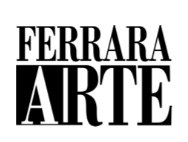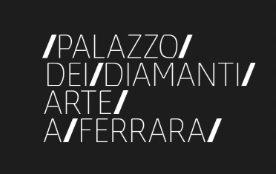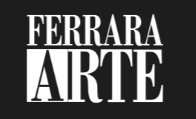Along with Velázquez and Murillo, Francisco de Zurbarán was one of the great painters of the Golden Age of Spanish painting, and the refined naturalism of his work left a lasting legacy on European art. Combining the mysticism of his time with the realism rooted in the traditions of his country, he produced compositions that were at once monumental yet familiar, in which the sublime world and the material world come together to create visions that transcend reality. For the strength and immediacy of his inventions, Zurbarán’s work was much admired by his contemporaries.
No less significant is the impact his works had on modern artists, such as Manet, Morandi, Picasso and Dalí, who drew inspiration from the simplicity and purity of his forms. More recently, his fundamental contribution to the history of art has been confirmed by authoritative studies and international exhibitions.
Organized by the Fondazione Ferrara Arte and the Centre for Fine Arts in Brussels, and thanks to the special collaboration of the Museo Nacional del Prado in Madrid and the Museo de Bellas Artes in Seville, this exhibition dedicated to Zurbarán is an opportunity to admire for the first time in Italy the masterpieces of one of the greatest interpreters of Baroque art. With this exhibition, curated by Ignacio Cano with the assistance of Gabriele Finaldi, the city of Ferrara intends to relaunch its cultural program, aiming to introduce foreign artists of the highest calibre and interest, but who are little known in Italy. Rigorously selected works coming from museums and private collections in Europe and America retrace the key stages in Zurbarán’s career. Beginning with the early works with which the artist established his reputation in cosmopolitan Seville, such as The Vision of Saint Peter Nolasco (1629, Madrid, Museo del Prado) or the later Saint Francis (c. 1635, Milwaukee Art Museum), with their dramatic luminosity and contrasts inspired by the solemn works of Caravaggio, to the sober lyricism of his later works dating from his Madrid years and his contact with Velázquez.
In these, the style is oriented towards a refined classicism in which the chiaroscuro contrasts have softened, giving way to more delicate colours and a diffuse lighting, as in the Immaculate Conception with Saints Joachim and Anne (c. 1638-40, Edinburgh, Scottish National Gallery) or the Madonna and Child with the Infant Saint John (1662, Bilbao, Museo de Bellas Artes). Organized thematically and chronologically, the exhibition covers Zurbarán’s entire career, focusing on particular themes and pictorial genres that show the variety and originality of his painting. Many of the works with themes tied to the iconography of Virgin Mary are astonishing for their intimacy and immediacy, whether for their pensive air, (House at Nazareth, c. 1644-45, Madrid, Fondo Cultural Villar Mir), or ability to touch chords of extraordinary tenderness (The Young Virgin Asleep, c. 1655-60, Jerez de la Frontera, Cathedral), while the motif of vision reaches peaks of unparalleled intensity, as in The Miracle of the Porziuncola (c. 1630-31, Museo de Cádiz) and in the Apparition of the Virgin to Saint Peter Nolasco (c. 1628-30, private collection, courtesy Galerie Coatalem, Paris). Another extraordinary work is the enigmatic The Crucified Christ contemplated by a Painter (1650s, Madrid, Museo del Prado): according to critics, the painter in question is clearly Zurbarán himself, while others think it is a portrait of the evangelist-painter, Saint Luke. The still lifes and depictions of allegorical themes, such as A Cup of Water and a Rose (c. 1630, London, The National Gallery) and Agnus Dei (c. 1635-40, The San Diego Museum of Art) constitute one of the most interesting chapters of his work. The artist gave his compositions an air of sacredness by carefully arranging the objects in a confined space, setting them in a rarefied and silent atmosphere. In these small pictures, as in the many still lifes to be found within various paintings, Zurbarán renders the forms as though purified by the light, in a crystalline vision of great detail and quiet monumentality. Among the artist’s most original inventions are the great figures of the saints. These sophisticated portraits were immensely popular and were made in series especially for the New World. The sequences reunited in this exhibition include notable works such as Saint Casilda (c. 1635, Madrid, Museo Thyssen-Bornemisza), Benjamin (1640s, private collection) and Saint Ursula (Genua, Palazzo Bianco), showing the artist’s ability to depict sacred episodes with charm and elegance, thanks to the poses, the skilful rendering of the jewellery and textiles, and the brilliant palette.
These majestic figures, turned towards the viewer like protagonist of a portrait, now as then, exercise a magnetic charm.
Curated by
Ignacio Cano con la consulenza scientifica di Gabriele Finaldi
Organized by
Fondazione Ferrara Arte e Gallerie d’Arte Moderna e Contemporanea in collaborazione con il Centre for Fine Arts di Bruxelles e con la speciale collaborazione del Museo Nacional del Prado e del Museo de Bellas Artes di Siviglia
Enti promotori
Comune di Ferrara
Provincia di Ferrara
Con il patrocinio di
Regione Emilia-Romagna e Ferrara Terra e Acqua
Supported by
Fondazione Teatro Comunale di Ferrara
Technical sponsor
MAG JLT
Tappa successiva
Bozar, Bruxelles, 29 January – 25 May 2014























